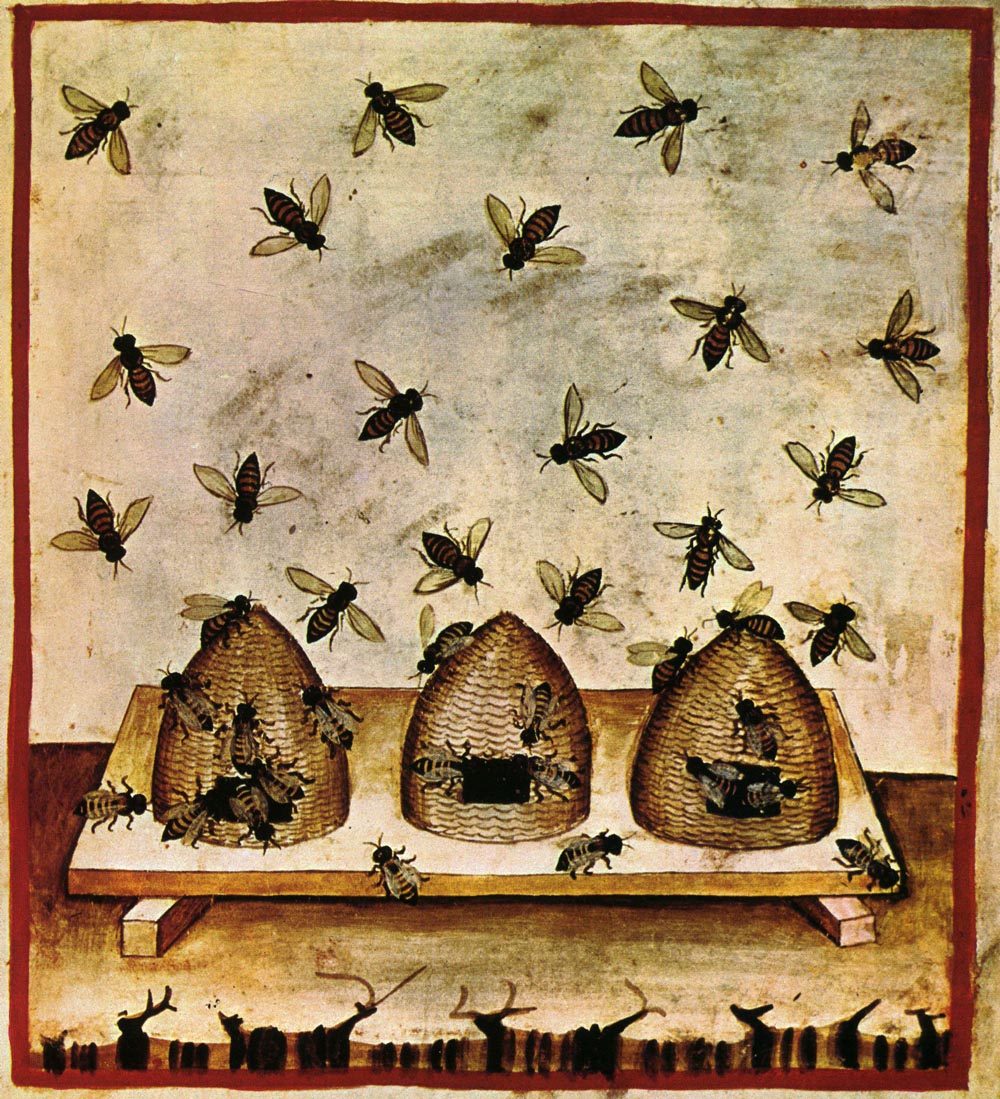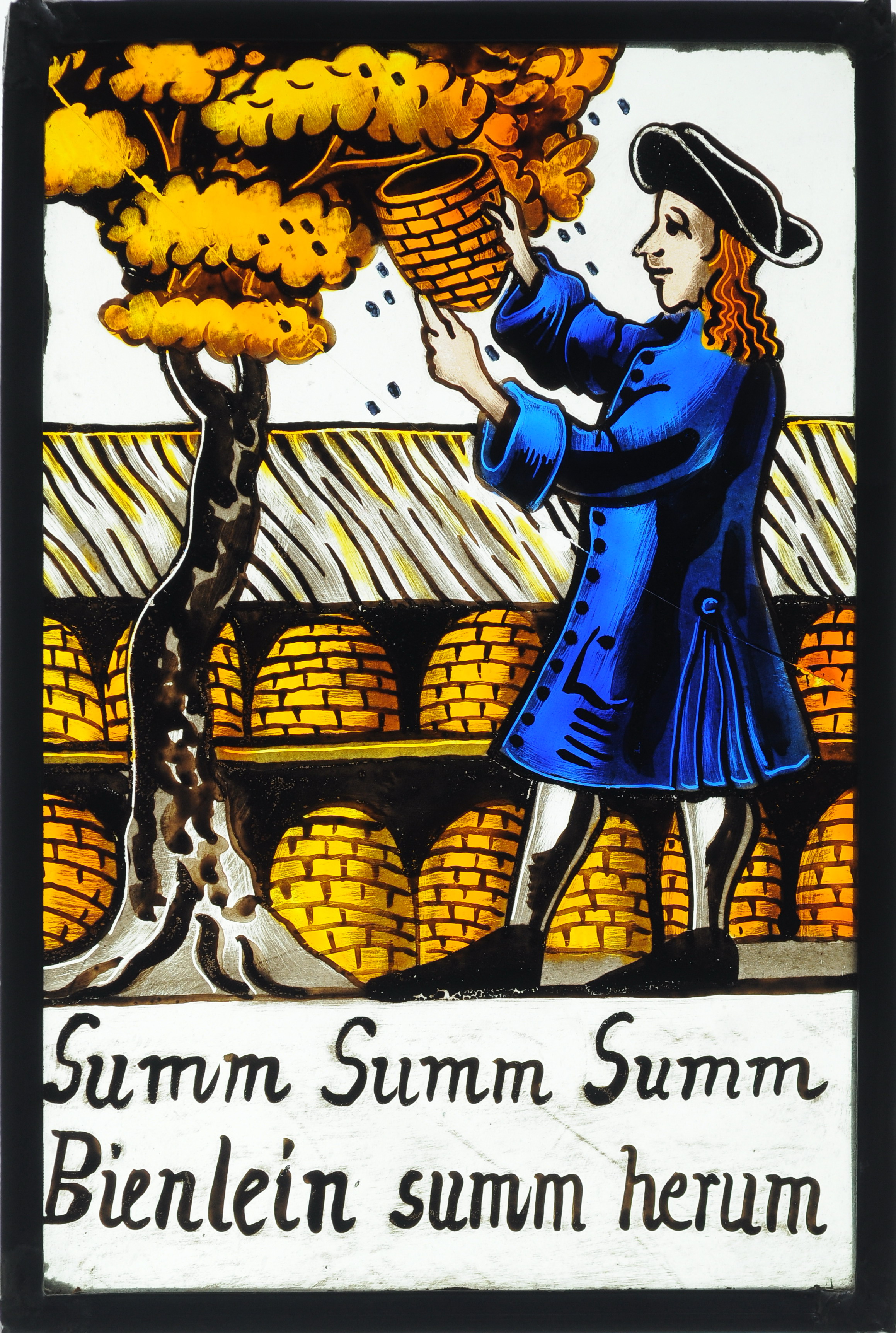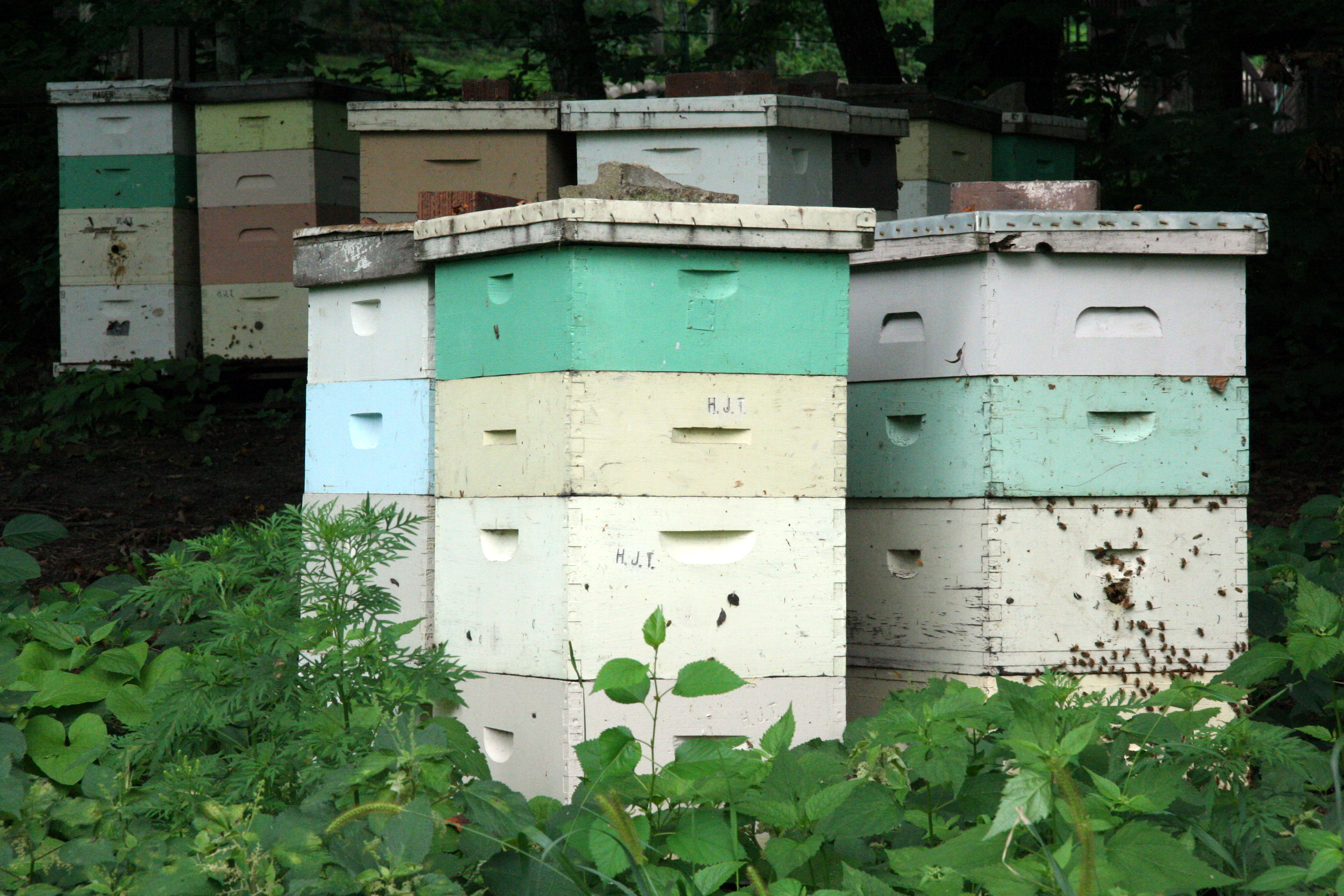|
Jenter Kits
A Jenter kit or Karl Jenter kit is a piece of equipment used by beekeepers to raise large numbers of queen honeybees. Rival techniques for rearing queen bees generally require grafting the honeybee larvae by hand. As such, the development of this kit by Karl Jenter is a significantly useful tool to assist in beekeeping. Application Beekeepers once had to graft the honeybee eggs or larvae by hand, using tiny scoup-like tools and in some cases by using tools such as tweezers. This fiddly approach would frequently result in the damaging of the egg or larva that was being grafted thus halting the development into a queen bee. The Jenter kit uses a system of plastic cups or 'cells' in which a queen bee can lay her eggs. The cells containing the eggs can then be removed from the laying box and placed into an isolated box for larval development - with no direct handling of the larvae. As the first queen bee to hatch will kill rival hatchlings, the eggs are covered with a small plasti ... [...More Info...] [...Related Items...] OR: [Wikipedia] [Google] [Baidu] |
Hive Frame
A hive frame or honey frame is a structural element in a beehive that holds the honeycomb or brood comb within the hive enclosure or box. The hive frame is a key part of the modern movable-comb hive. It can be removed in order to inspect the bees for disease or to extract the excess honey. History In 1814 Petro Prokopovych invented the world's first beehive which used hive frames. Early prototypes had a large distance between frames, and the frame lay on supporting strips of wood. As a result, the frames were cross-attached by burr comb and propolized to the supporting strips and were difficult to remove. In Prokopovych's design, the frames were placed only in the honey chamber. In the brood chamber, the bees built the combs in free style. Johann Dzierzon described the correct distance between combs in the brood chamber as 1½ inches from the center of one bar to the center of the next. In 1848, Dzierzon introduced grooves into the hive's side walls replacing the strips of wood ... [...More Info...] [...Related Items...] OR: [Wikipedia] [Google] [Baidu] |
Beekeepers
A beekeeper is a person who keeps honey bees. Beekeepers are also called honey farmers, apiarists, or less commonly, apiculturists (both from the Latin '' apis'', bee; cf. apiary). The term beekeeper refers to a person who keeps honey bees in beehives, boxes, or other receptacles. The beekeeper does not control the creatures. The beekeeper owns the hives or boxes and associated equipment. The bees are free to forage or leave (swarm) as they desire. Bees usually return to the beekeeper's hive as the hive presents a clean, dark, sheltered home. Purposes of beekeeping Value of honey bees Honey bees produce commodities such as honey, beeswax, pollen, propolis, and royal jelly. Some beekeepers also raise queens and other bees to sell to other farmers, and to satisfy scientific curiosity. Beekeepers also use honeybees to provide pollination services to fruit and vegetable growers. Many people keep bees as a hobby. Others do it for income either as a sideline to other work or as a ... [...More Info...] [...Related Items...] OR: [Wikipedia] [Google] [Baidu] |
Queen Bee
A queen bee is typically an adult, mated female (gyne) that lives in a colony or hive of honey bees. With fully developed reproductive organs, the queen is usually the mother of most, if not all, of the bees in the beehive. Queens are developed from larvae selected by worker bees and specially fed in order to become sexually mature. There is normally only one adult, mated queen in a hive, in which case the bees will usually follow and fiercely protect her. The term "queen bee" can be more generally applied to any dominant reproductive female in a colony of a eusocial bee species other than honey bees. However, as in the Brazilian stingless bee ''Schwarziana quadripunctata'', a single nest may have multiple queens or even dwarf queens, ready to replace a dominant queen in a case of sudden death. Development During the warm parts of the year, female "worker" bees leave the hive every day to collect nectar and pollen. While male bees serve no architectural or pollinating purpo ... [...More Info...] [...Related Items...] OR: [Wikipedia] [Google] [Baidu] |
Larva
A larva (; plural larvae ) is a distinct juvenile form many animals undergo before metamorphosis into adults. Animals with indirect development such as insects, amphibians, or cnidarians typically have a larval phase of their life cycle. The larva's appearance is generally very different from the adult form (''e.g.'' caterpillars and butterflies) including different unique structures and organs that do not occur in the adult form. Their diet may also be considerably different. Larvae are frequently adapted to different environments than adults. For example, some larvae such as tadpoles live almost exclusively in aquatic environments, but can live outside water as adult frogs. By living in a distinct environment, larvae may be given shelter from predators and reduce competition for resources with the adult population. Animals in the larval stage will consume food to fuel their transition into the adult form. In some organisms like polychaetes and barnacles, adults are immobil ... [...More Info...] [...Related Items...] OR: [Wikipedia] [Google] [Baidu] |
Beekeeping
Beekeeping (or apiculture) is the maintenance of bee colonies, commonly in man-made beehives. Honey bees in the genus '' Apis'' are the most-commonly-kept species but other honey-producing bees such as ''Melipona'' stingless bees are also kept. Beekeepers (or apiarists) keep bees to collect honey and other products of the hive: beeswax, propolis, bee pollen, and royal jelly. Pollination of crops, raising queens, and production of package bees for sale are other sources of beekeeping income. Bee hives are kept in an apiary or "bee yard". The keeping of bees by humans, primarily for honey production, began around 10,000 years ago. Georgia is known as the "cradle of beekeeping" and the oldest honey ever found comes from that country. The 5,500-year-old honey was unearthed from the grave of a noblewoman during archaeological excavations in 2003 near the town Borjomi. Ceramic jars found in the grave contained several types of honey, including linden and flower honey. Domestication of ... [...More Info...] [...Related Items...] OR: [Wikipedia] [Google] [Baidu] |
Honeybee
A honey bee (also spelled honeybee) is a eusocial flying insect within the genus ''Apis'' of the bee clade, all native to Afro-Eurasia. After bees spread naturally throughout Africa and Eurasia, humans became responsible for the current cosmopolitan distribution of honey bees, introducing multiple subspecies into South America (early 16th century), North America (early 17th century), and Australia (early 19th century). Honey bees are known for their construction of perennial colonial nests from wax, the large size of their colonies, and surplus production and storage of honey, distinguishing their hives as a prized foraging target of many animals, including honey badgers, bears and human hunter-gatherers. Only eight surviving species of honey bee are recognized, with a total of 43 subspecies, though historically 7 to 11 species are recognized. Honey bees represent only a small fraction of the roughly 20,000 known species of bees. The best known honey bee is the western honey ... [...More Info...] [...Related Items...] OR: [Wikipedia] [Google] [Baidu] |
London, Ohio
London is a city in and the county seat of Madison County, Ohio, United States. Located about southwest of the Ohio capital of Columbus, London was established in 1811 to serve as the county seat. The population was 10,279 at the 2020 census. The ZIP code is 43140. History Soon after the village was platted in the early 1810s, a Methodist church was founded in the community. Today known as First United Methodist Church, this congregation built a small log church building in 1820; it was London's first church. In the early 1900s, the church added facilities for the storage of human milk to sustain the orphanage it then operated. Geography According to the United States Census Bureau, the city has a total area of , all land. Demographics 2010 census At the 2010 census London had 9,904 residents, comprising 3,991 households and 2,511 families. The population density was . There were 4,410 housing units at an average density of . The racial makeup of the city was 89.2% Whit ... [...More Info...] [...Related Items...] OR: [Wikipedia] [Google] [Baidu] |
Apiarist
A beekeeper is a person who keeps honey bees. Beekeepers are also called honey farmers, apiarists, or less commonly, apiculturists (both from the Latin '' apis'', bee; cf. apiary). The term beekeeper refers to a person who keeps honey bees in beehives, boxes, or other receptacles. The beekeeper does not control the creatures. The beekeeper owns the hives or boxes and associated equipment. The bees are free to forage or leave (swarm) as they desire. Bees usually return to the beekeeper's hive as the hive presents a clean, dark, sheltered home. Purposes of beekeeping Value of honey bees Honey bees produce commodities such as honey, beeswax, pollen, propolis, and royal jelly. Some beekeepers also raise queens and other bees to sell to other farmers, and to satisfy scientific curiosity. Beekeepers also use honeybees to provide pollination services to fruit and vegetable growers. Many people keep bees as a hobby. Others do it for income either as a sideline to other work or as ... [...More Info...] [...Related Items...] OR: [Wikipedia] [Google] [Baidu] |
Beehive
A beehive is an enclosed structure in which some honey bee species of the subgenus '' Apis'' live and raise their young. Though the word ''beehive'' is commonly used to describe the nest of any bee colony, scientific and professional literature distinguishes ''nest'' from ''hive''. ''Nest'' is used to discuss colonies that house themselves in natural or artificial cavities or are hanging and exposed. ''Hive'' is used to describe an artificial/man-made structure to house a honey bee nest. Several species of ''Apis'' live in colonies, but for honey production the western honey bee (''Apis mellifera'') and the eastern honey bee (''Apis cerana'') are the main species kept in hives. The nest's internal structure is a densely packed group of hexagonal prismatic cells made of beeswax, called a honeycomb. The bees use the cells to store food (honey and pollen) and to house the brood (eggs, larvae, and pupae). Beehives serve several purposes: production of honey, pollination of nearby ... [...More Info...] [...Related Items...] OR: [Wikipedia] [Google] [Baidu] |
Varroa
''Varroa'' is a genus of parasitic mesostigmatan mites associated with honey bees, placed in its own family, Varroidae. The genus was named for Marcus Terentius Varro, a Roman scholar and beekeeper. The condition of a honeybee colony being infested with ''Varroa'' mites is called varroosis (also, incorrectly, varroatosis). ''Varroa'' mites, specifically the species ''Varroa destructor'', are recognised as the biggest pest to honeybees worldwide due to their ability to transmit diseases such as deformed wing virus (or DWV) to larval or pupating bees, resulting in death or severe deformity of the pupae. History and behavior ''Varroa'' mites feed off the fat body tissue of adult, pupal, and larval honey bees, and may carry viruses that are particularly damaging to the bees (e.g., deformed wings, and IAPV), and accordingly they have been implicated in colony collapse disorder. Research has indicated that alone, neither ''Varroa'' mites nor deformed wing virus are particularly de ... [...More Info...] [...Related Items...] OR: [Wikipedia] [Google] [Baidu] |
Colony Collapse Disorder
Colony collapse disorder (CCD) is an abnormal phenomenon that occurs when the majority of worker bees in a honey bee colony disappear, leaving behind a queen, plenty of food, and a few nurse bees to care for the remaining immature bees. While such disappearances have occurred sporadically throughout the history of apiculture, and have been known by various names (including disappearing disease, spring dwindle, May disease, autumn collapse, and fall dwindle disease), the syndrome was renamed colony collapse disorder in early 2007 in conjunction with a drastic rise in reports of disappearances of western honey bee (''Apis mellifera'') colonies in North America. Beekeepers in most European countries had observed a similar phenomenon since 1998, especially in Southern and Western Europe; the Northern Ireland Assembly received reports of a decline greater than 50%. The phenomenon became more global when it affected some Asian and African countries as well. Colony collapse disorder co ... [...More Info...] [...Related Items...] OR: [Wikipedia] [Google] [Baidu] |







